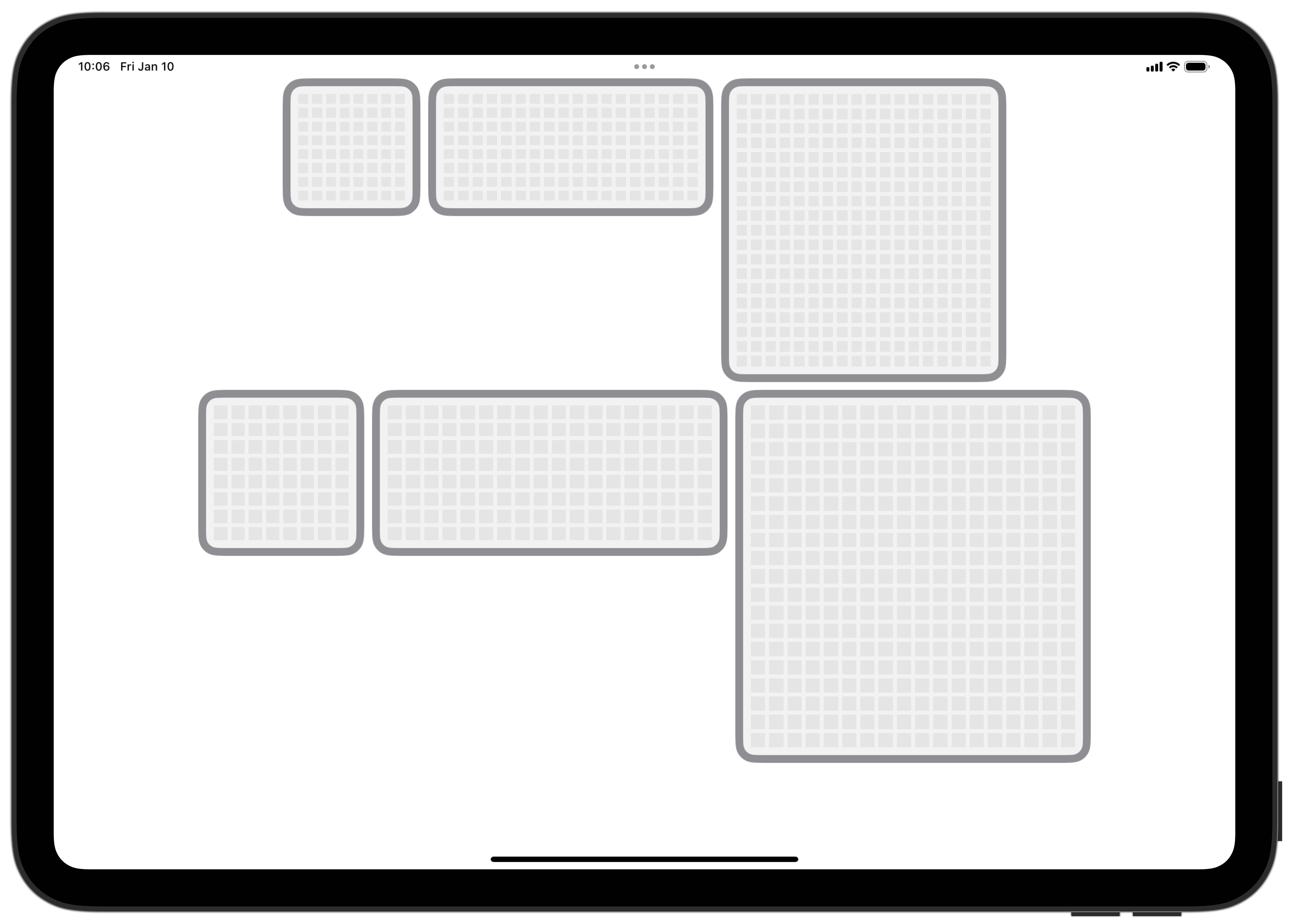
The above image represents the sum total of the progress I made yesterday. It sure doesn’t look like much. It is a grid system for an upcoming widget feature I am working on for Widgetsmith. I’m almost embarrassed to post it as the collective effort for an entire day’s professional work, but that is ultimately the point of this post.
I always find coming back from the Christmas break (or any break for that matter) challenging. The regular routines of my working life are joyously disrupted, providing a welcome break and opportunity to re-charge. But when I now sit down at my computer and face the wide-open expanse of possible work endeavors, I rarely have a clear sense of where to start and how to get back into the swing of things.
I’ve faced this struggle hundreds of times over the years of my career and navigated it with varying degrees of success. Over those years, I’ve built up a variety of “tricks” to get me going again. These are little habits or rituals which help steer me towards any degree of productivity again.
The above screenshot is an example of what I call my “Accomplish One Thing” rule. On any day when I’m supposed to be working, I have developed the habit of looking back at my day and looking for at least one thing which I really accomplished that day (ideally something tangible or visible). I tend to think about this as I’m clearing up my desk, ready to return to home life. It really doesn’t matter how big or small that thing is, but there needs to be something which I can point to.
The real magic of this habit is how it helps me earlier in the day. If I know I’ll need to have something tangible to point to later on, I find I am much more inclined to choose meaningful, but manageable tasks on these early days back. Tasks which are useful but also scoped to not overwhelm or daunt me. Obviously, not all jobs which need doing are atomic enough to be accomplished in a day’s work, but usually I find that I can either break larger tasks into smaller pieces or structure the sequence of work to allow for some of these.
The goal here is not to make massive progress; it isn’t about getting back up to full speed again, going from 0 to 100 miles/hour in one swift step. It is about building up my working inertia again. Speed is useful, but inertia is powerful.
Inertia in my working life is the thing which I find most powerfully motivates and animates my progress. It gives you that sense of inevitability about accomplishing the outcome and desire each morning to keep the ball rolling. Inertia is what will get you through the inevitable slumps, disappointments, and mistakes later on in a project. So I want to get it accumulating as soon as I can.
So yesterday I built that grid; today I’ll tackle the next thing I can accomplish in this project, and who knows what will come on Monday. But I know from experience that if I can string together a few days of tangible progress, the future will sort itself out.